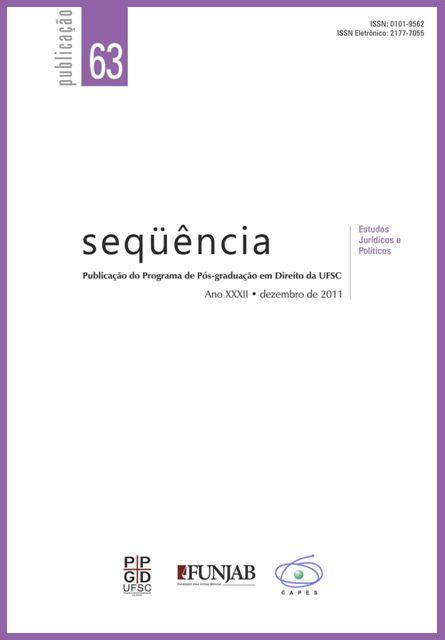<b> Minority Rights Interpreted: The democratic commitment of Brazilian Law</b> <br> doi:10.5007/2177-7055.2011v32n63p319
DOI:
https://doi.org/10.5007/2177-7055.2011v32n63p319Abstract
The category of minority is used as argumentative reinforcement in Law for the defense of fundamental rights. It is destined to groups that were historically marginalized, and claim for public recognition of their peculiarities and the protection of rights. This category, which appeared linked to the idea of state sovereignty and nationality, now is extended to demands ignored before. The interpretation of principles related to the minority category must therefore be conceived as a need for consolidation of constitutional democratic values. This study aims to identify how the minority category is articulated in decisions of the judiciary. The source of precedents on which research is developed are those decisions of all instances of the Brazilian courts, tried and published since October 5, 1988 until July 31, 2010. The conclusion is that the use of minority category by the judges pursues the democratic ideal of law enforcement to those belonging to minority groups.Downloads
Published
2011-12-24
How to Cite
MARTINS, Argemiro Cardoso Moreira; MIZUTANI, Larissa. <b> Minority Rights Interpreted: The democratic commitment of Brazilian Law</b> <br> doi:10.5007/2177-7055.2011v32n63p319. Seqüência - Legal and Political Studies, Florianópolis, v. 32, n. 63, p. 319–352, 2011. DOI: 10.5007/2177-7055.2011v32n63p319. Disponível em: https://periodicos.ufsc.br/index.php/sequencia/article/view/2177-7055.2011v32n63p319. Acesso em: 6 dec. 2025.
Issue
Section
Artigos
License

This work is licensed under a Creative Commons Attribution-NonCommercial-NoDerivs 3.0 Unported License.























